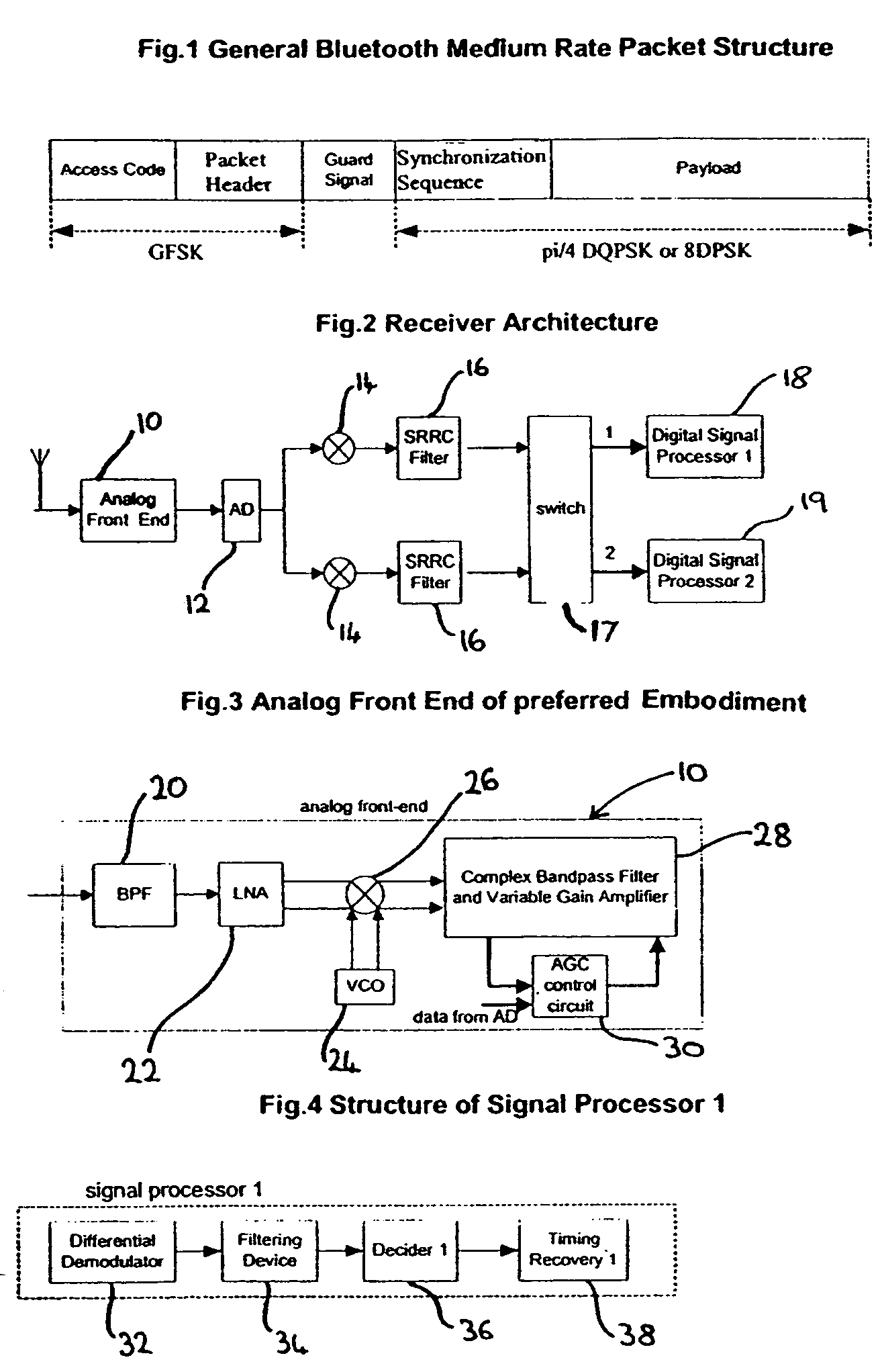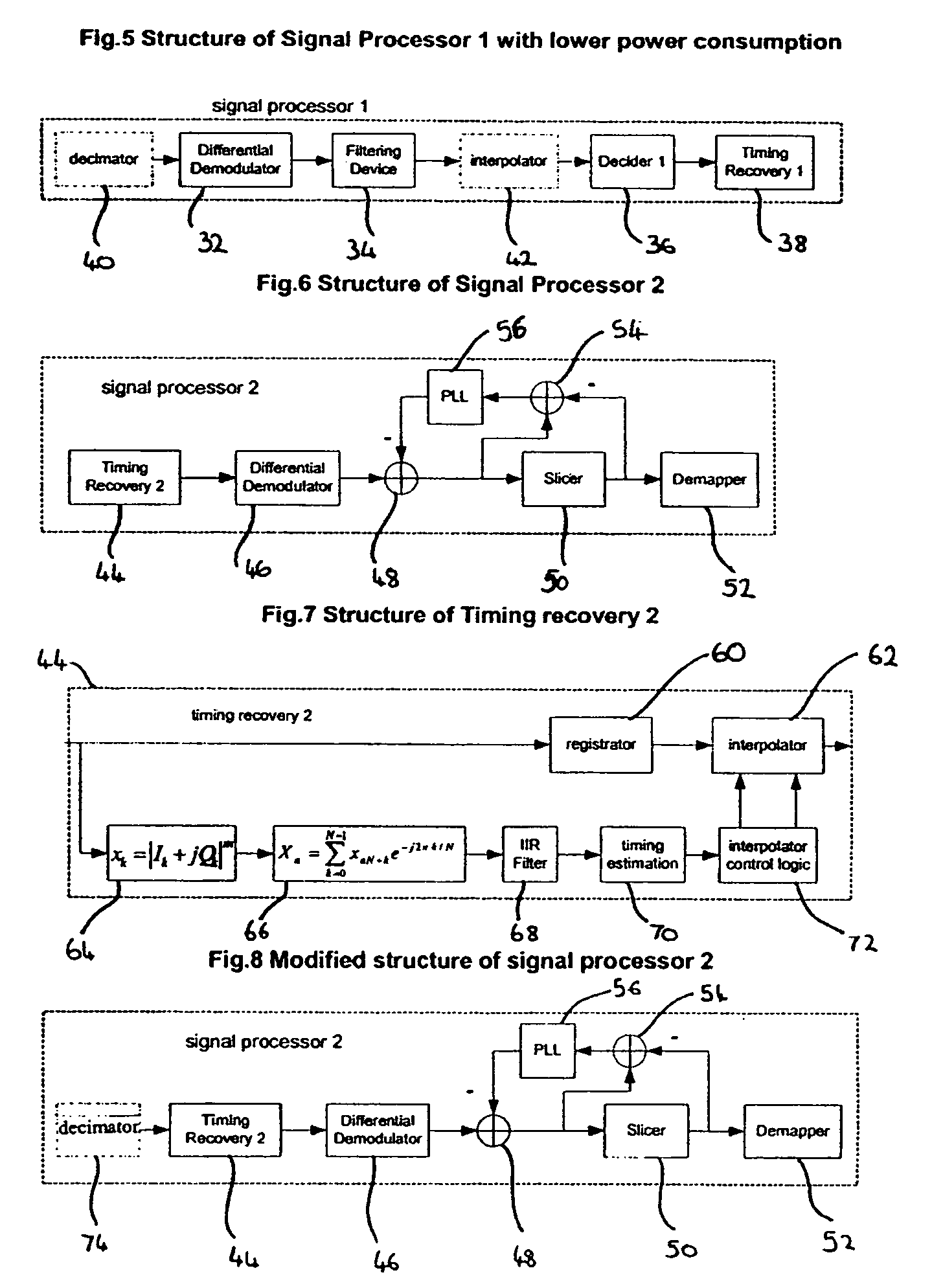Digital receiver and method for processing received signals
- Summary
- Abstract
- Description
- Claims
- Application Information
AI Technical Summary
Benefits of technology
Problems solved by technology
Method used
Image
Examples
Embodiment Construction
[0055] As mentioned above, FIG. 1 shows the packet format specification for medium rate Bluetooth systems. The specification requires two different modulation systems encompassed within a single packet. The access code and packet header are transmitted at 1 Mbps basic rate based on GFSK modulation [as required by the Specification of the Bluetooth System—Part A Radio Specification (Version 1.1, February 2001)]. Subsequent payload and synchronization sequences are then transmitted using either π / 4DQPSK or an 8DPSK modulation scheme. π / 4DQPSK and 8DPSK are linear modulation schemes with similar linearity properties. A guard signal period may be inserted between the packet header and the synchronization sequence.
[0056] FIGS. 2 to 8 show various aspects of a receiver according to a number of preferred embodiments of the invention as used to receive and process the packet structure of FIG. 1.
[0057]FIG. 2 shows a low-IF (intermediate frequency) digital receiver for a burst-mode wireless...
PUM
 Login to View More
Login to View More Abstract
Description
Claims
Application Information
 Login to View More
Login to View More - R&D
- Intellectual Property
- Life Sciences
- Materials
- Tech Scout
- Unparalleled Data Quality
- Higher Quality Content
- 60% Fewer Hallucinations
Browse by: Latest US Patents, China's latest patents, Technical Efficacy Thesaurus, Application Domain, Technology Topic, Popular Technical Reports.
© 2025 PatSnap. All rights reserved.Legal|Privacy policy|Modern Slavery Act Transparency Statement|Sitemap|About US| Contact US: help@patsnap.com



